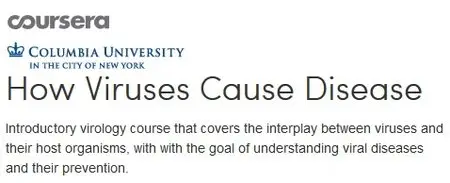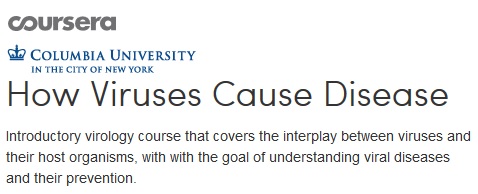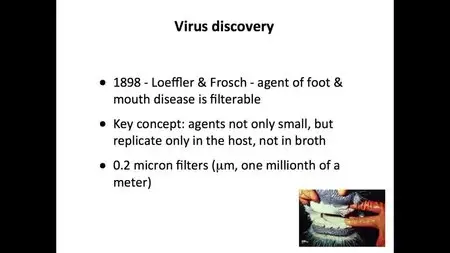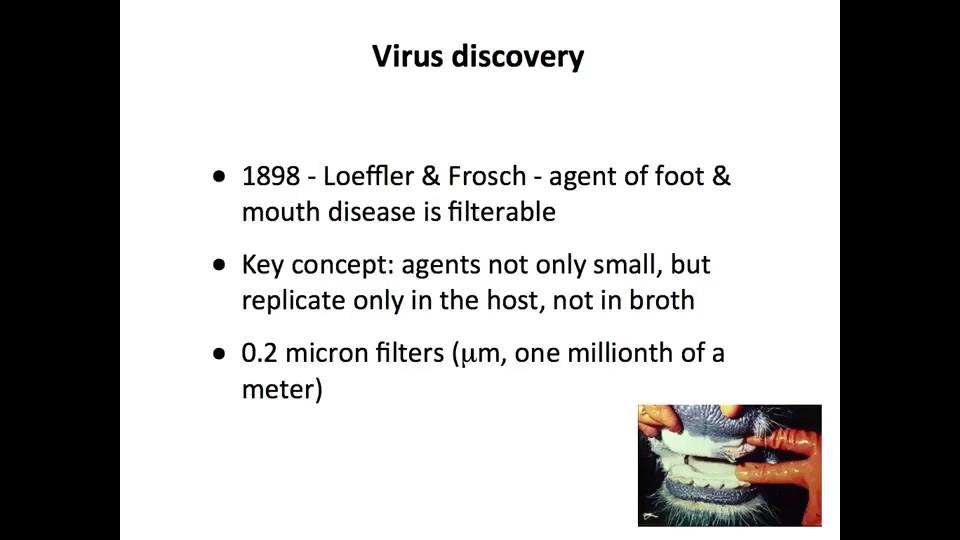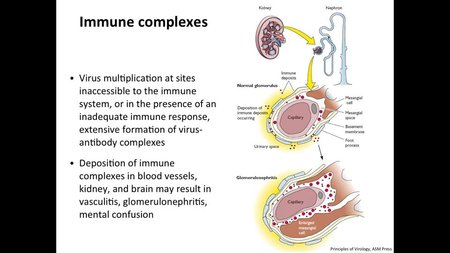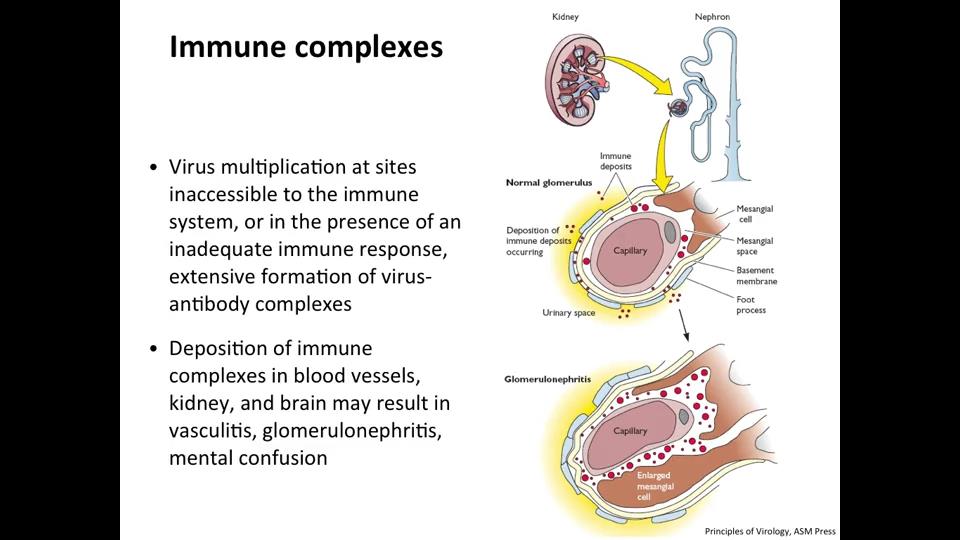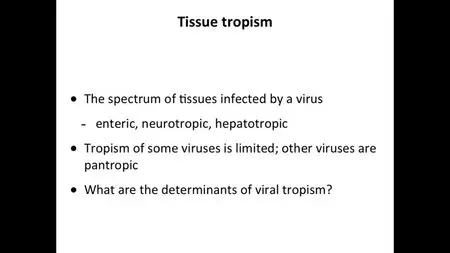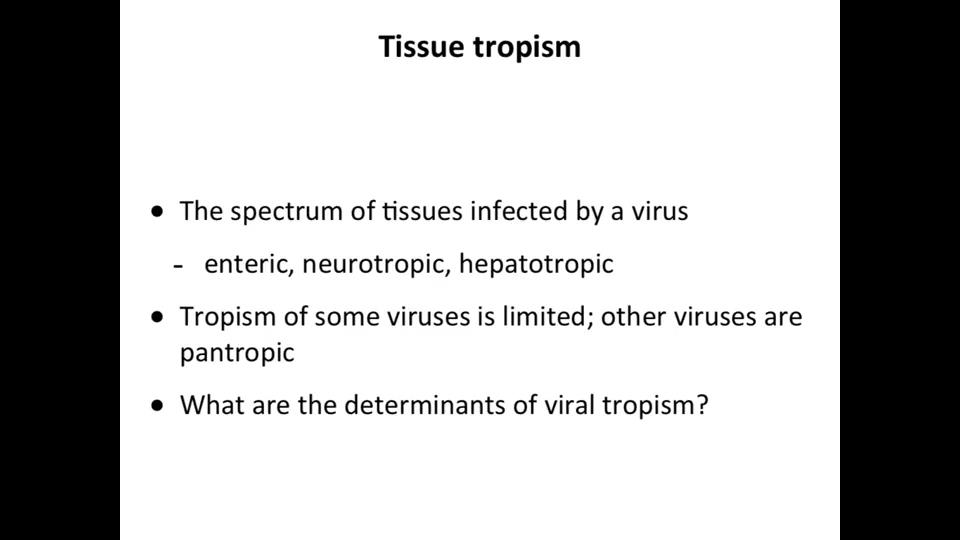Coursera - Virology II: How Viruses Cause Disease
English | 2014 | mp4 | VP80 960x540 | Vorbis 2 ch | 4 hrs 13 min | 2 GB
eLearning
English | 2014 | mp4 | VP80 960x540 | Vorbis 2 ch | 4 hrs 13 min | 2 GB
eLearning
Introductory virology course that covers the interplay between viruses and their host organisms, with with the goal of understanding viral diseases and their prevention.
This introductory virology course explores the interplay between viruses and their host organisms. The course begins with an overview of how infection is established in a host, then moves to a virologist's view of immune defenses. Next we consider how the replication strategy and the host response determine the outcome of infection, such that some are short and others are of long duration. The mechanisms by which virus infections transform cells in culture are explored, a process that may lead to tumor formation in animals. We then move to a discussion of how viral infections are controlled by vaccines and antiviral drugs. After an introduction to viral evolution, we discuss the principles learned from zoonotic infections, emerging infections, and humankind's experiences with epidemic and pandemic viral infections. The course ends with an exploration of unusual infectious agents such as viroids, satellites, and prions, followed by a discussion of the causative agent of the most serious current worldwide epidemic, HIV-1.
Course Syllabus
Week 1
- Infection basics
- Entry into the host
- Viral spread
- Tissue invasion and tropism
- Transmission and seasonality
Week 2
- Innate immune responses
- Interferon
- Sentinels and complement
- Inflammation
- Adaptive immunity
Week 3
- Viral virulence
- Mechanisms of cell injury I
- Mechanisms of cell injury II
- Host susceptibility
Week 4
- Acute infections
- Influenza
- Poliomyelitis
- Measles
- Gastroenteritis
- West Nile fever
Week 5
- Persistent infections
- Persistence by modulating the adaptive response
- Two persistent infections
- Herpes simplex virus
- Epstein-Barr virus
Week 6
- Transformation
- RNA tumor viruses
- Transforming retroviruses
- DNA tumor viruses
- Epiphenomena of a unique life style
Week 7
- Vaccines
- How do you make a vaccine?
- Inactivated vaccines
- Attenuated vaccines
Week 8
- Antivirals
- Antiviral discovery
- Antiviral resistance
- Other antiviral targets
- HIV antivirals
Week 9
- Viral evolution
- Drivers of evolution
- Error threshold and bottlenecks
- Selection
- Origins of viruses
Week 10
- Emerging viruses
- Host-virus interactions
- Examples of emerging viruses
- SARS and MERS
- Canine parvovirus
Week 11
- Viroids
- Satellites
- Transmissible spongiform encephalopathies
- Prions
Week 12
- HIV and AIDS
- The origin of HIV
- HIV pathogenesis
- An amazing but deadly virus
Recommended Background
Two semesters of a rigorous, molecularly-oriented introductory biology course and Virology I: How Viruses Work.
Screenshots:


